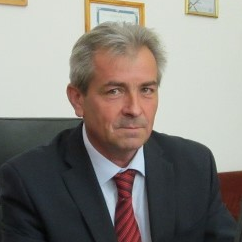GIS Methods, Models and Applications in Interdisciplinary Studies
A special issue of Applied Sciences (ISSN 2076-3417). This special issue belongs to the section "Earth Sciences".
Deadline for manuscript submissions: closed (31 December 2021) | Viewed by 28716
Special Issue Editors
2. Academy of Romanian Scientists, Ilfov 3, 050044 Bucharest, Romania
Interests: multirisk; soil favourability; GIS; statistical analysis; drones
Special Issues, Collections and Topics in MDPI journals
Interests: GIS; risk assessment; soil studies; spatial planning
Special Issues, Collections and Topics in MDPI journals
Interests: theoretical geography; geomorphology; landslide monitoring; geographical epistemology; spatial planning
Interests: GIS; remote sensing; digital mapping; smart mobility; sustainable urban mobility; proximal sensing technologies
Interests: wildfire modeling; wildfire management; fire impact; land survey; engineering survey; construction survey; landslides; UAV; mapping; GIS; cadastre; topography; geodesy; cartography; remote sensing; photogrammetry; 3D modeling
Special Issues, Collections and Topics in MDPI journals
Special Issue Information
Dear Colleagues,
The main themes of this Special Issue include status analysis using GIS technology in order to develop methods of spatial analysis or geographical linkages to applied interdisciplinary research, innovative methods of research and data integration, as well as the processing and visualization of research results using the tools of spatial analysis and cartography.
This Special Issue welcomes papers that address:
- Application, validation, and comparison of results obtained by quantitative and qualitative spatial modelling, expert knowledge, deterministic models, etc. using GIS technology in environmental studies, geographical studies, engineering with an emphasis on the objective analysis of model representativeness and their degree of predictability in applied geomorphology, and natural and anthropic hazards and risk.
- Projects and applications related to technical issues for work focused on GIS technology applications in forest monitoring and evaluating the spatio-temporal distribution of forest and animal species under the pressure of climate change.
- Specific spatial analysis applications of GIS tools in built-up areas in different parts of the word and different states of development using remote sensing and satellite images.
- Evaluation of geospatial technologies and digital geomorphological mapping for fluvial dynamics assessment, landslides, and soil erosion, used in the context of individual and cumulative risk assessment.
- Information from long-term historical and actual field experimentation based on satellite images and UAV acquisition data in comparison with the current state-of-the-art in environmental studies.
- Studies related to the identification of favourable or restrictive areas for different land uses (agricultural, crop distribution, forestry or building spaces) in the current context of climate changes, with impacts on ecological factors influence (climatic, pedological, hydrological) and anthropogenic pressure involving the use of GIS technology to identify the evolution trends, the correlations between the factors, and the elaboration of land-use planning proposals.
- Integrating modern techniques of data acquisition in cadastre and technical documentation in order to increase productivity and mitigate field risk. Improvement of traditional topography and land surveys with the help of GIS applications.
Other related topics on processing historical and new spatial data are welcome.
This Special Issue aims to collect works in different fields of research using GIS spatial analysis techniques. Research papers, extended review works, and works involving technical GIS applications and databases are encouraged.
Dr. Sanda Rosca
Prof. Dr. Ștefan Bilașco
Prof. Dr. Dănuț Petrea
Prof. Dr. Titus Cristian Man
Dr. Paul Sestraș
Guest Editors
Manuscript Submission Information
Manuscripts should be submitted online at www.mdpi.com by registering and logging in to this website. Once you are registered, click here to go to the submission form. Manuscripts can be submitted until the deadline. All submissions that pass pre-check are peer-reviewed. Accepted papers will be published continuously in the journal (as soon as accepted) and will be listed together on the special issue website. Research articles, review articles as well as short communications are invited. For planned papers, a title and short abstract (about 100 words) can be sent to the Editorial Office for announcement on this website.
Submitted manuscripts should not have been published previously, nor be under consideration for publication elsewhere (except conference proceedings papers). All manuscripts are thoroughly refereed through a single-blind peer-review process. A guide for authors and other relevant information for submission of manuscripts is available on the Instructions for Authors page. Applied Sciences is an international peer-reviewed open access semimonthly journal published by MDPI.
Please visit the Instructions for Authors page before submitting a manuscript. The Article Processing Charge (APC) for publication in this open access journal is 2400 CHF (Swiss Francs). Submitted papers should be well formatted and use good English. Authors may use MDPI's English editing service prior to publication or during author revisions.
Keywords
- GIS modelling
- Remote sensing and GIS
- Spatial analysis
- Physical geography
- Field experimentation and GIS Processing
- Methodological aspects of forest monitoring
- Geomorphological analysis and mapping
- Fluvial dynamics
- Hazard scenario analysis
- Soil erosion and land degradation
- Multirisk assessment
- Terrain analysis
- Regional planning
- Modern land survey and topography
- GIS assessment in cadastre and technical documentation
Benefits of Publishing in a Special Issue
- Ease of navigation: Grouping papers by topic helps scholars navigate broad scope journals more efficiently.
- Greater discoverability: Special Issues support the reach and impact of scientific research. Articles in Special Issues are more discoverable and cited more frequently.
- Expansion of research network: Special Issues facilitate connections among authors, fostering scientific collaborations.
- External promotion: Articles in Special Issues are often promoted through the journal's social media, increasing their visibility.
- Reprint: MDPI Books provides the opportunity to republish successful Special Issues in book format, both online and in print.
Further information on MDPI's Special Issue policies can be found here.









